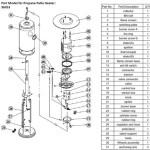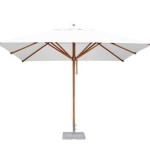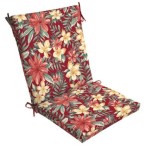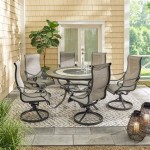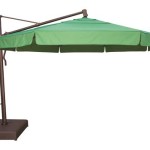Pine Sol on Patio: A Potential Solution for Fly Control
Flies are a common nuisance, especially during warmer months, impacting outdoor enjoyment and potentially posing health risks. Controlling fly populations around patios and outdoor living spaces is a persistent challenge for many homeowners. Traditional methods, such as fly traps and insecticides, often require frequent replacement or raise concerns about environmental impact and safety. Consequently, alternative and readily available solutions, like Pine Sol, are often explored as potential fly deterrents.
Pine Sol is a widely recognized household cleaner known for its disinfecting and deodorizing properties. Its distinct pine scent is derived from pine oil, which is an essential oil extracted from pine trees. This scent is often cited as the primary reason for its purported effectiveness against flies. However, the scientific basis for this claim is not definitively established through extensive research. This article aims to explore the possible mechanisms by which Pine Sol might deter flies, examine the practical considerations of using it outdoors, discuss its safety profile, and compare it to other established fly control methods.
The Potential Mechanism of Action: Why Pine Sol Might Deter Flies
The central hypothesis behind using Pine Sol to repel flies revolves around its strong scent. Flies, like many insects, rely heavily on their sense of smell to locate food sources, potential mates, and suitable breeding grounds. Powerful odors can disrupt their olfactory senses, making it difficult for them to navigate and locate these resources. Pine oil, the primary fragrance component of Pine Sol, possesses a potent aroma that may overwhelm or confuse a fly's olfactory receptors.
Essential oils, including pine oil, are known to contain volatile organic compounds (VOCs). These VOCs evaporate into the air, creating an aromatic environment. Some VOCs have documented insect-repelling properties, interfering with insect behavior. While the specific VOCs in pine oil responsible for repelling flies haven't been conclusively identified through rigorous scientific studies focused specifically on Pine Sol, the general principle of scent-based repellency is plausible and supported by research on other essential oils.
It's also been suggested that the disinfecting properties of Pine Sol might play a role in fly control. Flies are attracted to decaying organic matter, which serves as both a food source and a breeding ground. By disinfecting and cleaning surfaces, Pine Sol may reduce the availability of these attractants, indirectly deterring flies from congregating in treated areas. However, this effect would likely be temporary and require frequent reapplication, especially in outdoor environments subject to rain and other environmental factors.
Furthermore, the surfactants present in Pine Sol, which contribute to its cleaning action, might create an unfavorable surface for flies to land on. Surfactants reduce surface tension, potentially making it difficult for flies to maintain a stable grip. This effect, however, is likely minimal and short-lived, especially outdoors where dust and debris can quickly negate any surface modifications.
It's important to note that the effectiveness of Pine Sol as a fly repellent is likely dependent on several factors, including the concentration of Pine Sol used, the species of fly, the environmental conditions (temperature, humidity, wind), and the availability of alternative attractants. A weak concentration might not provide a sufficient olfactory deterrent, while strong winds could quickly dissipate the scent. The presence of readily available food sources or breeding sites could also diminish Pine Sol's repelling effect.
Practical Considerations for Using Pine Sol on a Patio
When considering the use of Pine Sol as a fly deterrent on a patio, several practical aspects need to be carefully evaluated. These considerations involve application methods, surface compatibility, potential staining, and the overall cost-effectiveness of this approach.
The application method is crucial for achieving any potential level of fly control. Simply pouring Pine Sol onto the patio surface is not recommended. This would be wasteful, potentially damaging to some surfaces, and could pose a slipping hazard. A more practical approach is to dilute Pine Sol with water and apply it using a spray bottle or a mop. The recommended dilution ratio is generally found on the Pine Sol product label for general cleaning purposes. However, experimenting with slightly higher concentrations (within safe limits indicated on the label) might be necessary to achieve the desired level of fly deterrence, while always ensuring the product's warnings and safety guidelines are heeded.
Before applying Pine Sol to the entire patio surface, it's essential to test it on a small, inconspicuous area to assess compatibility and prevent potential staining. Pine Sol contains dyes that could potentially discolor certain materials, particularly porous surfaces like concrete or unsealed stone. Observe the test area for any signs of discoloration, etching, or other damage before proceeding with broader application. If staining occurs, consider using a more dilute solution or choosing an alternative fly control method altogether.
The frequency of Pine Sol application is another important consideration. Since the scent dissipates over time, and the product is exposed to the elements outdoors, frequent reapplication is likely necessary to maintain any potential level of fly deterrence. Rain, sunlight, and wind can all accelerate the degradation and evaporation of Pine Sol, reducing its effectiveness. A daily or even twice-daily application might be required, depending on the environmental conditions and the level of fly activity.
The overall cost-effectiveness of using Pine Sol as a fly deterrent depends on the price of the product, the dilution ratio, the application frequency, and the size of the patio. While Pine Sol is relatively inexpensive compared to some commercial fly control products, the need for frequent reapplication could potentially make it a less cost-effective solution in the long run. It's important to compare the cost of using Pine Sol over a period of time with the cost of alternative methods, such as fly traps, insecticides, or professional pest control services.
Furthermore, consider whether the scent of Pine Sol is desirable. While some people find the pine scent pleasant, others may find it overpowering or bothersome, especially in an outdoor setting. Prolonged exposure to the scent could also potentially cause headaches or respiratory irritation in sensitive individuals. Take into account the preferences of all occupants of the home and potential visitors before using Pine Sol extensively on the patio.
Safety Profile and Comparison to Other Fly Control Methods
While Pine Sol is generally considered safe for household use when used according to the manufacturer's instructions, it's important to be aware of potential safety concerns, especially when using it outdoors. Skin and eye irritation are possible if the product comes into direct contact with these areas. Always wear gloves and eye protection when handling Pine Sol, and avoid spraying it directly into the face. If contact occurs, rinse thoroughly with water.
Ingestion of Pine Sol can be harmful, especially to children and pets. Store Pine Sol out of reach of children and animals, and take precautions to prevent accidental ingestion. If ingestion occurs, seek immediate medical attention. The product label will contain first aid information.
When applying Pine Sol outdoors, avoid spraying it directly onto plants or into bodies of water, as it may be harmful to aquatic life and vegetation. The surfactants in Pine Sol can disrupt the protective coatings on plant leaves and interfere with their ability to absorb nutrients. The chemicals in the product can also be toxic to fish and other aquatic organisms.
Compared to other fly control methods, Pine Sol offers certain advantages and disadvantages. Fly traps, for example, are effective at capturing flies, but they can be unsightly and require regular emptying. Insecticides are generally more potent and can kill flies quickly, but they also pose risks to human health and the environment. Natural repellents, such as citronella candles or essential oil diffusers, are generally safer, but they may be less effective at controlling fly populations.
Professional pest control services are the most effective way to control severe fly infestations. Pest control professionals have access to specialized equipment and insecticides that are not available to the general public. They can also identify the source of the fly infestation and implement targeted control measures. However, professional pest control services can be expensive.
Ultimately, the best fly control method depends on the specific situation and the individual's preferences. Pine Sol might be a suitable option for individuals seeking a readily available, relatively inexpensive, and potentially less toxic alternative to traditional insecticides. However, its effectiveness may be limited, and frequent reapplication is likely necessary. Consider the safety concerns, environmental impact, and cost-effectiveness of all available options before making a decision.
In conclusion, while anecdotal evidence and the properties of its constituent ingredients suggest Pine Sol may offer some degree of fly deterrence on patios, its efficacy is likely variable and dependent on numerous environmental and situational factors. A comprehensive approach to fly control, combining preventative measures like proper sanitation and waste management with a variety of deterrent options, is generally the most effective strategy for minimizing fly populations in outdoor living spaces.

Does Pine Sol Keep Flies Away Family Handyman

Homemade Fly Repellent With Pine Sol Keep Flies Away

Msn

How To Repel Flies With Pinesol The Homespun Hydrangea

How To Repel Flies With Pinesol The Homespun Hydrangea

2 Ingredient Pine Sol Fly Spray For Keeping Flies Away

2 Ingredient Pine Sol Fly Spray For Keeping Flies Away

Pine Sol Fly Repellant Keep Flies Away

How To Repel Flies With Pinesol The Homespun Hydrangea

Pine Sol To Keep The Flies Away This Summer Momsoftiktok Mom For Tiktok
See Also

